How Slouching Destroys Health
![]()
HOW SLOUCHING DESTROYS HEALTH (ISSUE 121)
By Diane Gold
Slouching destroys health. It may stop our breathing, but it can certainly compromise our power and our vitality. Not only do we compress the spine when we slouch, but we limit our respiration and cause our body to atrophy . We don’t usually think about these events, but they are obvious when we do.
Shoulders over the hips is the proper alignment for standing or sitting. This can also be done for people who spend their days in bed, with a small alignment trick below.
HEALTH AND SLOUCHING
One of the ways we stay healthy is to pump lots of fresh oxygen into our systems. The cleaner the air, the better off we are. The freer the airway is, the easier it is for it to flow.
 Think about what happens when we have unwanted mucous in our body. We have difficulty breathing. This is because our airway is blocked.
Think about what happens when we have unwanted mucous in our body. We have difficulty breathing. This is because our airway is blocked.
Or think about when someone falls on top of us in gym class or martial arts training; we have a hard time breathing because our lungs get compressed and our oxygen level is restricted.
The same thing happens when we slouch: we restrict our own airway. It does take some effort to hold the torso up without slouching, but our bodies will thank us for the unbounded occasion to suck up oxygen with no obstructions.
MISSING THE OPPORTUNITY TO WORK THAT BODY
Every time we are standing or sitting, or even lying down; we have the opportunity to work the abdominal muscles to hold the torso straight. Every time we don’t use this chance, it goes away.
It feels really good to have strong abs. They can do amazing things. Strong abs allow for a great life and great digestion, too.
We also have the chance to learn how to relax our chins, necks and shoulders with good posture. This, too, goes away if we don’t grab the moment.
PERPETUATING THE HABIT
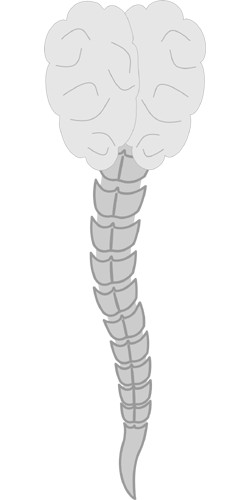 When we keep slouching, we get used to it and it becomes normal. Unless we take a good long look, there are probably 5 times a day we slouch without noticing it: tidying up, cooking, working, driving, sitting on the toilet are some examples. We know that we develop a habit from a cue. The cue is the urge to relax or the urge to rest. What could possibly be wrong with letting the shoulders go while we are cooking? Isn’t this activity supposed to be mellow and fun?
When we keep slouching, we get used to it and it becomes normal. Unless we take a good long look, there are probably 5 times a day we slouch without noticing it: tidying up, cooking, working, driving, sitting on the toilet are some examples. We know that we develop a habit from a cue. The cue is the urge to relax or the urge to rest. What could possibly be wrong with letting the shoulders go while we are cooking? Isn’t this activity supposed to be mellow and fun?
Carving out relaxation time is crucially important. It doesn’t mean we have to slouch. After the cue, (wanting to relax) we do a behavior (letting the abs, shoulders and butt go out of alignment) that brings us the reward of ending the work it takes to stand, sit or keep the bones aligned. If repeated, this becomes the norm. Thus, we habitually slouch. Until we replace this behavior.
ACTION STEPS
1) USING THE LEGS
 When we look at daily activities that require us to carry weight, we have to use our legs to take the pressure off our backs and our knees. Take vacuuming, sweeping, carrying out the recycling bin. These tasks require us to exert effort. When we bend the knees to engage the legs, we can do the pushing, pulling, carrying without compromising our spine. When an object is fairly bulky or awkward, it’s important to use some type of leverage (bent knees, a wagon, a dolly or a partner to avoid slouching the back during this enterprise.
When we look at daily activities that require us to carry weight, we have to use our legs to take the pressure off our backs and our knees. Take vacuuming, sweeping, carrying out the recycling bin. These tasks require us to exert effort. When we bend the knees to engage the legs, we can do the pushing, pulling, carrying without compromising our spine. When an object is fairly bulky or awkward, it’s important to use some type of leverage (bent knees, a wagon, a dolly or a partner to avoid slouching the back during this enterprise.
2) USING THE ABS
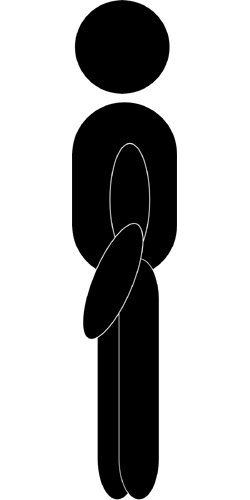 Funny as it may sound, using the abdominal plate to hold the back erect is the easiest way to insure a healthy posture. This would mean this set of muscles has to be strong enough to endure the weight of the undertaking.
Funny as it may sound, using the abdominal plate to hold the back erect is the easiest way to insure a healthy posture. This would mean this set of muscles has to be strong enough to endure the weight of the undertaking.
The labor can be as gentle as standing at the mirror to brush our teeth.
I bring this one up because several times this year, I have looked at my posture while grooming my teeth; it was in need of correction. Either my shoulders were slumped, I was leaning over the sink with an out of alignment back or I relaxed my abdominal muscles enough to slouch.
The action step is to notice yourself at tooth brushing time, and get the shoulders over the hips while you brush, floss and tongue brush.
3) TUCKING THE BUTT
So often, when people hear,
“Tuck the butt,”
they tuck the hips forward (which is correct), and they compromise the spine (obviously not correct). The purpose of this butt adjustment is to take the pressure off the joints and the back and place it on the bones which were built to do the heavy lifting (pun intended).
Standing in line is the perfect place to tuck your butt. Since we have decided to stand in this line, rarer and rarer with online banking, taxes and government paperwork; we can use this instance to work on our slouching habit by changing our behavior. It takes just as much effort to stand straight as to slouch, even though we think the opposite; so we might as well maximize our own energy by aligning the body.
 Large-chested women will find this particularly helpful as they have the challenge of not leaning too far back or forward to compensate for the weight of the chest.
Large-chested women will find this particularly helpful as they have the challenge of not leaning too far back or forward to compensate for the weight of the chest.
The action step are these:
a) While standing, feel like a soldier by rotating the belly button forward at the same time as tucking the butt so that the body is in a straight line. If you have strong abs, it’s OK if the torso is slightly forward of the hips.
b) While sitting in your chair or on the couch (or sitting up in bed), tuck the butt so that the lower back presses against the lower back of the chair or couch. If this leaves space between the upper back and the chair or couch back, place a pillow there so that the center of the shoulders stay over the center of the hips.
If you are seated on a seat with no back, tuck the butt in the same way and use the abs to hold the shoulders over the hips with straight back.
c) Especially for people who spend most of their time in bed, tuck the butt while lying down. Press the lower back into the bed. If possible, and for best leverage until you have rock solid abs, bend the knees upward with feet flat on the bed.
CONCLUSION
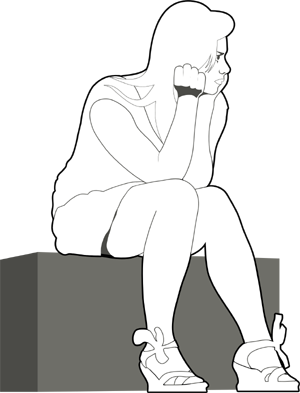 Slouching is insidious. It pops into our lives when we least expect and becomes normal unless we manage and fix it. When we are younger, it doesn’t seem like a big deal, except that the earlier on we make our move, the earlier we will develop the habit of an aligned body.
Slouching is insidious. It pops into our lives when we least expect and becomes normal unless we manage and fix it. When we are younger, it doesn’t seem like a big deal, except that the earlier on we make our move, the earlier we will develop the habit of an aligned body.
We need our breathing for health, so let’s help it out. We need to train our bones, muscles and tendons to keep us straight.
We feel better when our bodies are in line. There’s no time like the present to make slouching a thing of the past in our lives.
___
If you wish to share your story, please hit reply in your email program to be contacted.
___
![]()
FEEDBACK
We value your feedback very much.
Please leave a comment.
Please LIKE us on the website and at WarriorsOfWeight on Facebook.
Please follow us on Twitter @warriorsoweight.
Thanks.
![]()
DIANE GOLD, AUTHOR
Diane Gold, Founder of Warriors of Weight, Turning Habits Into Health, is a mentor in tai chi, kung fu and meditation, a music, fitness and stress expert, dedicated mom, studying plant-based nutrition and habit change.
If she knows one thing better than anything else, it might be how to align the body for maximize health. She says,
“We have lots of time to live and make changes. Our lives will power up once we pay attention to body alignment. It’s as if someone turns a switch on the world; but we have done it. That’s how important posture is.
“It’s climactic. Replacing slouching helps our health. It is poignant. It’s like lighting up our lives because we let in more oxygen when we sit and stand well.
“Do it once. Then do it again. Keep on going.It’s good for all of us and makes us strong.”
![]()

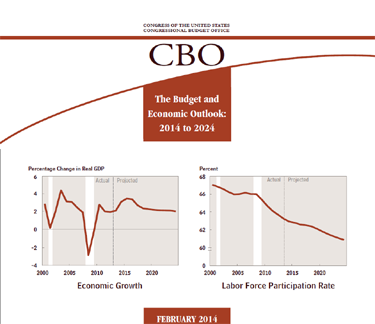 The Health Care Law Is Projected To Shrink The Work Force. This headline looks at full-time workers in an estimate from the Congressional Budget Office. According to Jason Furman, Council Of Economic Advisors Chairman, the change in number of workers has to do more with people’s choosing part-time assignments rather than that employers are deleting jobs to avoid employee’s health insurance costs.
The Health Care Law Is Projected To Shrink The Work Force. This headline looks at full-time workers in an estimate from the Congressional Budget Office. According to Jason Furman, Council Of Economic Advisors Chairman, the change in number of workers has to do more with people’s choosing part-time assignments rather than that employers are deleting jobs to avoid employee’s health insurance costs.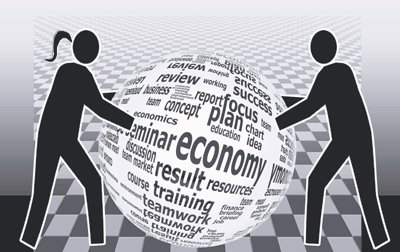 Certainly, we are bound to contribute to humanity in a way that sustains us in some financial way and in order to leave a personal human legacy. We don’t have to get it by having a J-O-B in an environment, where group health care was the only reason we took the job. We can be CRE-8-TIVE and do what we love, which, for most people, is not what they do at their J-O-B. They can be small business owners, putting them in a category to be able to pay for themselves, but out of the headlined category: full-time W-2 worker, about whom the CBO is estimating.
Certainly, we are bound to contribute to humanity in a way that sustains us in some financial way and in order to leave a personal human legacy. We don’t have to get it by having a J-O-B in an environment, where group health care was the only reason we took the job. We can be CRE-8-TIVE and do what we love, which, for most people, is not what they do at their J-O-B. They can be small business owners, putting them in a category to be able to pay for themselves, but out of the headlined category: full-time W-2 worker, about whom the CBO is estimating. There is so much creative energy that we all possess that is channeled by some into entrepreneurship. The people in this division make some of the breakthroughs that make our country great and make us happy Americans. We are thriving spiritually because of choices like entrepreneurship. Yes, there are just as many, if not more people who have that same spark of invention who don’t make a living at it and struggle. But they deserve the time to keep working at it.
There is so much creative energy that we all possess that is channeled by some into entrepreneurship. The people in this division make some of the breakthroughs that make our country great and make us happy Americans. We are thriving spiritually because of choices like entrepreneurship. Yes, there are just as many, if not more people who have that same spark of invention who don’t make a living at it and struggle. But they deserve the time to keep working at it. It’s fair to say that what keeps us happy and healthy is our own personal foundation. When we have a belief system or a set of ethics by which we live; this drives us to do act the way we do and make the decisions that we do.
It’s fair to say that what keeps us happy and healthy is our own personal foundation. When we have a belief system or a set of ethics by which we live; this drives us to do act the way we do and make the decisions that we do. The Health Care Law aka The Affordable Care Act aka Obamacare is part of the legacy of Barack Obama, 44th President of the United States. It allows for people previously uninsurable due to health issues to be insurable. It allows for people who could not afford health insurance to be subsidized enough to get it.
The Health Care Law aka The Affordable Care Act aka Obamacare is part of the legacy of Barack Obama, 44th President of the United States. It allows for people previously uninsurable due to health issues to be insurable. It allows for people who could not afford health insurance to be subsidized enough to get it.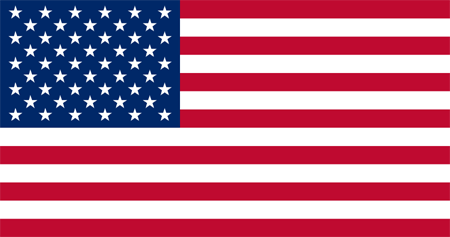 Finally, it seems as if freedom of choice is the reason for the shrinking employee headline. We’re all different. There’s no one way to be. And, through the ACA, the United States has just happily extended our freedom.
Finally, it seems as if freedom of choice is the reason for the shrinking employee headline. We’re all different. There’s no one way to be. And, through the ACA, the United States has just happily extended our freedom.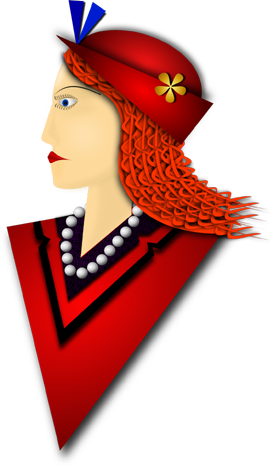 We develop habits based on how certain actions make us feel. Whether we wear designer clothes, keep our hair immaculate or stay fit because we enjoy people’s staring at us; we act out behaviors regularly to achieve these good feelings, aka rewards. The cue, which is the original feeling that makes us do a behavior urges us to work so we have access to buy clothing, get our hair done, so we look how we like. This urge also pushes us to work out so that our bodies look good, which gives us the end result: the reward of having people acknowledge our beauty. Appearance
We develop habits based on how certain actions make us feel. Whether we wear designer clothes, keep our hair immaculate or stay fit because we enjoy people’s staring at us; we act out behaviors regularly to achieve these good feelings, aka rewards. The cue, which is the original feeling that makes us do a behavior urges us to work so we have access to buy clothing, get our hair done, so we look how we like. This urge also pushes us to work out so that our bodies look good, which gives us the end result: the reward of having people acknowledge our beauty. Appearance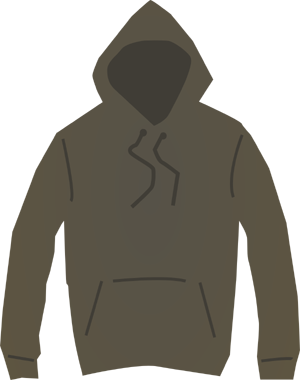 These are only examples of appearance habits we may have. There are others of us who specifically wear clothing to make us invisible, since we don’t like it when people stare. And there are others of us who do not consider what people think; they are busy with their own lives and work.
These are only examples of appearance habits we may have. There are others of us who specifically wear clothing to make us invisible, since we don’t like it when people stare. And there are others of us who do not consider what people think; they are busy with their own lives and work.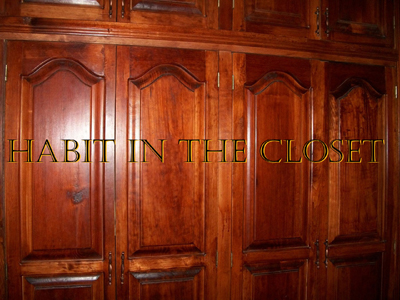 When we choose to change one of our habits, we replace the habit that was there with a new one. The old one is still there, but it is a “habit in the closet,” so to speak. As long as we are doing a new behavior and not opening the closet, the habit will stay put. For as long as we choose. Habit In The Closet
When we choose to change one of our habits, we replace the habit that was there with a new one. The old one is still there, but it is a “habit in the closet,” so to speak. As long as we are doing a new behavior and not opening the closet, the habit will stay put. For as long as we choose. Habit In The Closet

 1)
1)
 It is always a good idea to trust, to believe the next person, give credence to what we read, being astute when credentialing who’s saying what and knowing what authors are attached to an agenda other than truth is present.
It is always a good idea to trust, to believe the next person, give credence to what we read, being astute when credentialing who’s saying what and knowing what authors are attached to an agenda other than truth is present. Evidence-based medicine is the use of proof or high quality information and research in medicine, the science of prevention, diagnosis and treatment of a disorder of function, often called disease. Factual testing is used to assess benefits and risks of specific treatments prescribed by learned people in the medical field. How many times does one academic support another’s study, body of work, thesis – even overlooking its controversy – for the primary purpose of getting support back, be it money or editorial byline?
Evidence-based medicine is the use of proof or high quality information and research in medicine, the science of prevention, diagnosis and treatment of a disorder of function, often called disease. Factual testing is used to assess benefits and risks of specific treatments prescribed by learned people in the medical field. How many times does one academic support another’s study, body of work, thesis – even overlooking its controversy – for the primary purpose of getting support back, be it money or editorial byline? We, especially in the Western World, but common everywhere, have developed the habit of believing that, if a clinical trial has taken place, if a certified doctor has uttered it, if a governmental agency assigned to evaluate and cure illness has said it, if our pharmaceutical companies claim it (since they are so very regulated by the FDA and other government agencies), if it’s published in a medical journal; the information publicized from this event must be ethical, honest, conscientious, and, most of all, clinically based. This is a strong habit that we have been repeating since we were young, having been taught to trust doctors, nurses and other medical personnel as well products from the wonder drug companies whose breakthrough can cure disease.
We, especially in the Western World, but common everywhere, have developed the habit of believing that, if a clinical trial has taken place, if a certified doctor has uttered it, if a governmental agency assigned to evaluate and cure illness has said it, if our pharmaceutical companies claim it (since they are so very regulated by the FDA and other government agencies), if it’s published in a medical journal; the information publicized from this event must be ethical, honest, conscientious, and, most of all, clinically based. This is a strong habit that we have been repeating since we were young, having been taught to trust doctors, nurses and other medical personnel as well products from the wonder drug companies whose breakthrough can cure disease.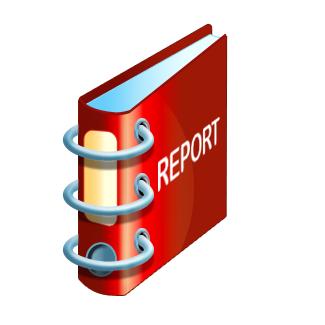 Medical professionals incorporate information of the latest experiments and trials along with their own research, college research and academic experience to make decisions.
Medical professionals incorporate information of the latest experiments and trials along with their own research, college research and academic experience to make decisions. 7) From pharmaceutical representatives, whose companies often times are the sponsors and controllers of the clinical trials and the data published.
7) From pharmaceutical representatives, whose companies often times are the sponsors and controllers of the clinical trials and the data published. Of course, it is possible to hear about a one-shot treatment occurrence that absolutely saved a patient’s life that was paid for by a company or whose marketing is the reason we heard about it. And, if we are this patient, we are thankful and ecstatic and swear by this one single, random, non-duplicable effort because it saved us and we live. This is a dangerous way to get information, though.
Of course, it is possible to hear about a one-shot treatment occurrence that absolutely saved a patient’s life that was paid for by a company or whose marketing is the reason we heard about it. And, if we are this patient, we are thankful and ecstatic and swear by this one single, random, non-duplicable effort because it saved us and we live. This is a dangerous way to get information, though. We come back to trust, which, as we’ve said, is good. As long as we add in all the factors that can bias evidence, we can evaluate whether the results of the evidence-based medicine we so cherish have any basis in profit or furthering political careers or paving the way for employment at a pharmaceutical company.
We come back to trust, which, as we’ve said, is good. As long as we add in all the factors that can bias evidence, we can evaluate whether the results of the evidence-based medicine we so cherish have any basis in profit or furthering political careers or paving the way for employment at a pharmaceutical company. There is lots of medical research both in academia and in companies in the pharmaceutical industry, from medical student projects, from already working doctors and medical professionals that is outstanding, amazing, monumental, life changing, life saving, cooperatively integrated with every other discipline that exists, evidence-based for real with no prejudice based on agenda that is the pure truth. Our arms go out to you in thanks, praise and commendation. Keep up the great work. We are counting on you.
There is lots of medical research both in academia and in companies in the pharmaceutical industry, from medical student projects, from already working doctors and medical professionals that is outstanding, amazing, monumental, life changing, life saving, cooperatively integrated with every other discipline that exists, evidence-based for real with no prejudice based on agenda that is the pure truth. Our arms go out to you in thanks, praise and commendation. Keep up the great work. We are counting on you.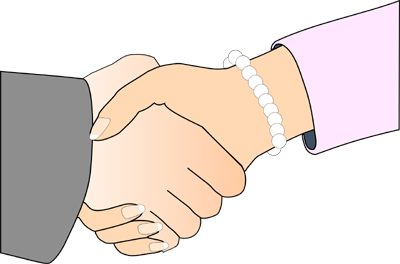
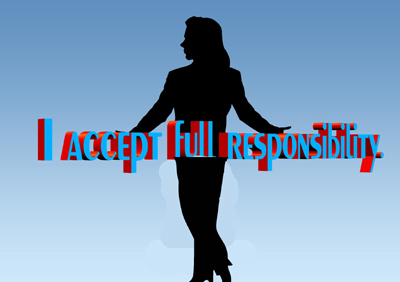 In the previous article in this series (June 24, 2013), I mentioned I was still looking for a primary care provider. I have found her. It is I, an unlicensed, non-medical person who knows a lot about nutrition and mind, body, spirit fitness. So far, I care the more about my own care than anyone I have found; I don’t treat myself like just another chart; I know the details of my case without having to look at a chart which is brief, at best; I have done research on nutrition and fitness and body processes and interactions that no medical personnel I know has done.
In the previous article in this series (June 24, 2013), I mentioned I was still looking for a primary care provider. I have found her. It is I, an unlicensed, non-medical person who knows a lot about nutrition and mind, body, spirit fitness. So far, I care the more about my own care than anyone I have found; I don’t treat myself like just another chart; I know the details of my case without having to look at a chart which is brief, at best; I have done research on nutrition and fitness and body processes and interactions that no medical personnel I know has done. Although I am looking forward to the day when all medical professionals offer electronic consults, the telehealth-telemedicine industry is already having us form a new habit, should we choose to accept what it is pushing. Their business model saves provider overhead, saves the government emergency visit costs for patients who get government subsidies, but the patient pays the same as before. As are many infrastructures, this one is abusive.
Although I am looking forward to the day when all medical professionals offer electronic consults, the telehealth-telemedicine industry is already having us form a new habit, should we choose to accept what it is pushing. Their business model saves provider overhead, saves the government emergency visit costs for patients who get government subsidies, but the patient pays the same as before. As are many infrastructures, this one is abusive. Does your doctor work for a pharmaceutical company? Did you know that some are commissioned to recruit patients for a new drug, getting paid per each head brought to the study? They are also trained to educate other doctors about the possible benefits of the drug so that other doctors will recruit patients to take the drug. Don’t know for sure, but I suspect that the educating doctor gets a cut of the stipend that every other doctor gets for bringing patients to the study. If this is the structure, it is multi-level marketing which I firmly believe in. But, in medicine, might there be agendas pushing prescribing techniques?
Does your doctor work for a pharmaceutical company? Did you know that some are commissioned to recruit patients for a new drug, getting paid per each head brought to the study? They are also trained to educate other doctors about the possible benefits of the drug so that other doctors will recruit patients to take the drug. Don’t know for sure, but I suspect that the educating doctor gets a cut of the stipend that every other doctor gets for bringing patients to the study. If this is the structure, it is multi-level marketing which I firmly believe in. But, in medicine, might there be agendas pushing prescribing techniques? Doctors and health professionals only get to see a summary of abstracts or the full abstract if they pay for a medical journal subscription that houses the abstract. The abstract is some editor’s summation of facts which may not reflect study results. How weird that drug study results are not open to patients. We’re the ones who have to decide to take them or not. These data are also not open to doctors. Should we just say,
Doctors and health professionals only get to see a summary of abstracts or the full abstract if they pay for a medical journal subscription that houses the abstract. The abstract is some editor’s summation of facts which may not reflect study results. How weird that drug study results are not open to patients. We’re the ones who have to decide to take them or not. These data are also not open to doctors. Should we just say,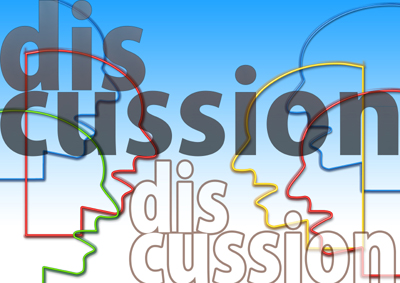 7a)
7a) If you have no insurance, ask the provider’s office person for what you will be responsible if you have a routine visit, an x-ray, anything else commonly done in your type of provider’s office. Of course, the office person will say s/he won’t know until afterwards. At this point, mention that you are asking for the cost for an office visit and 3 x-rays. If you don’t have the x-rays, you can deduct that amount. Also, if you have no insurance, request of the office personnel that they request of the provider to be permitted to pay the allowed amount paid by people on an in-network insurance plan. Sometimes, they will have mercy. But, if you don’t ask, you’ll never know.
If you have no insurance, ask the provider’s office person for what you will be responsible if you have a routine visit, an x-ray, anything else commonly done in your type of provider’s office. Of course, the office person will say s/he won’t know until afterwards. At this point, mention that you are asking for the cost for an office visit and 3 x-rays. If you don’t have the x-rays, you can deduct that amount. Also, if you have no insurance, request of the office personnel that they request of the provider to be permitted to pay the allowed amount paid by people on an in-network insurance plan. Sometimes, they will have mercy. But, if you don’t ask, you’ll never know.

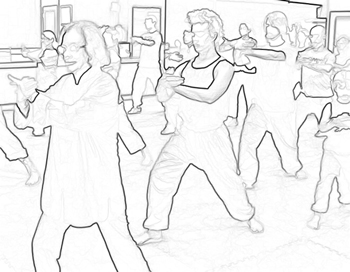 Another type of personal development fortifies us by our absorption of the very method we are studying. Tai chi, the other martial arts, free dance, meditation, yoga are disciplines in this mind-body arts category. Music, visual art, poetry are in the creative arts category. By studying any of these methods, we consume a system of learning. This system develops who we are. This development fortifies the world.
Another type of personal development fortifies us by our absorption of the very method we are studying. Tai chi, the other martial arts, free dance, meditation, yoga are disciplines in this mind-body arts category. Music, visual art, poetry are in the creative arts category. By studying any of these methods, we consume a system of learning. This system develops who we are. This development fortifies the world.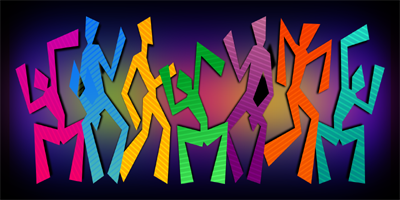 I had the pleasure of attending a 5-Rhythms’ dance session on Friday, January 3, led by Amber Ryan, in Miami. The purpose of the session was to spread goodness, to cleanse the body, mind and spirit and resonate with learning about ourselves. The ultimate goal was use the dance method (which is a method of doing your own steps with a little bit of guidance) to shake off all our own personal garbage so that we could let our own inherent love shine through.
I had the pleasure of attending a 5-Rhythms’ dance session on Friday, January 3, led by Amber Ryan, in Miami. The purpose of the session was to spread goodness, to cleanse the body, mind and spirit and resonate with learning about ourselves. The ultimate goal was use the dance method (which is a method of doing your own steps with a little bit of guidance) to shake off all our own personal garbage so that we could let our own inherent love shine through. I was very involved in the dance. But the word love came up several times. One of the other partners in the event kept expressing how she felt “so much love;” whether this was inside herself or from the group, I will not speculate. Although I could speculate because I felt some kind of love-y feeling inside, radiating out to the group and back to me. Nothing ethereal, I was heated from dancing. I was happy from releasing the tension in my body through dancing. I was dancing with others, one of my favorite activities. And I was socializing with people who had nothing, at that moment, to prove.
I was very involved in the dance. But the word love came up several times. One of the other partners in the event kept expressing how she felt “so much love;” whether this was inside herself or from the group, I will not speculate. Although I could speculate because I felt some kind of love-y feeling inside, radiating out to the group and back to me. Nothing ethereal, I was heated from dancing. I was happy from releasing the tension in my body through dancing. I was dancing with others, one of my favorite activities. And I was socializing with people who had nothing, at that moment, to prove. We know that personal development is individualistic, but individuals make up the world. We know that if we develop ourselves through certain disciplines, we will become spiritually rich humans and contribute good acts in the world.
We know that personal development is individualistic, but individuals make up the world. We know that if we develop ourselves through certain disciplines, we will become spiritually rich humans and contribute good acts in the world.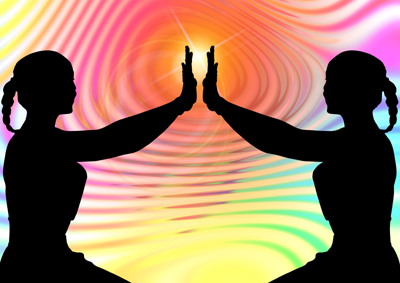 1)
1)


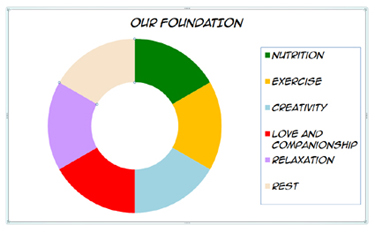 We, as humans, have a variety of requirements. To be at our best, we need a balanced infrastructure to support us. The simple version of this concept is that we need great nutrition, a little exercise, a way to be creative, love and companionship, daily relaxation, enough rest and a place to do this in. Each of us has a little bit different make-up and needs more or less in each of these areas, depending upon who we are.
We, as humans, have a variety of requirements. To be at our best, we need a balanced infrastructure to support us. The simple version of this concept is that we need great nutrition, a little exercise, a way to be creative, love and companionship, daily relaxation, enough rest and a place to do this in. Each of us has a little bit different make-up and needs more or less in each of these areas, depending upon who we are.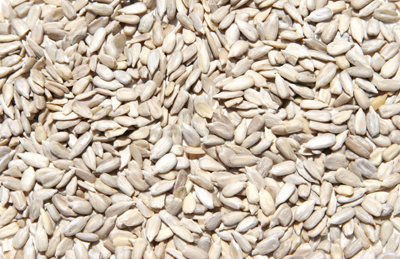

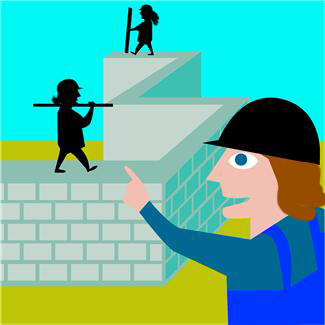

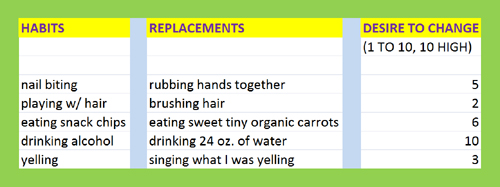
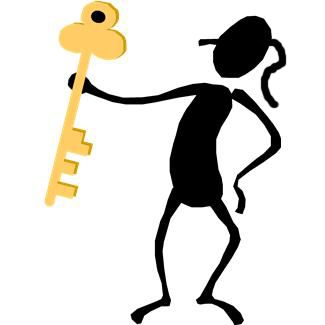 To succeed at our New Year’s Resolution Habit Change, repetition is key. Whatever our new behavior, it must be repeated for a good 3-week period as a humble beginning. I just read an article saying how 21 days to change a habit is a myth, and 66 days is more realistic. If you’re like me, it can take 90-180 days to take hold, and repetition is still necessary on a daily basis after that.
To succeed at our New Year’s Resolution Habit Change, repetition is key. Whatever our new behavior, it must be repeated for a good 3-week period as a humble beginning. I just read an article saying how 21 days to change a habit is a myth, and 66 days is more realistic. If you’re like me, it can take 90-180 days to take hold, and repetition is still necessary on a daily basis after that.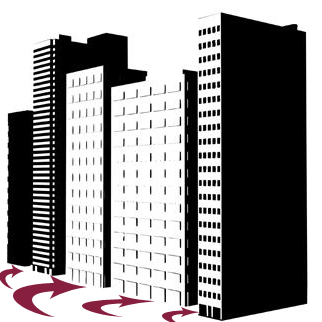


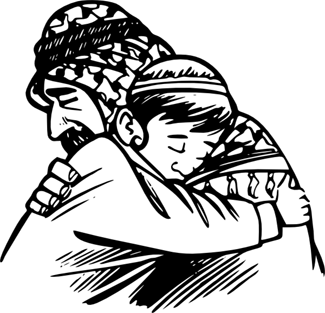 Forgiveness author, Smedes, quotes,
Forgiveness author, Smedes, quotes,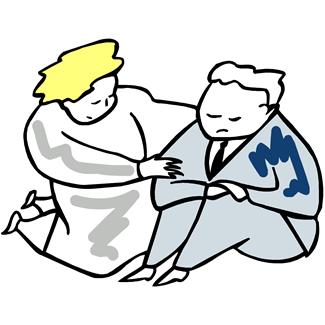
 As we all know, we feel more than one thing at once, such as anger and vulnerability or happiness and confidence. Next to these emotions, we place responsibility for our being hurt on someone; often we put it on ourselves. Other times, we put it on the person or group who created the hurtful situation.
As we all know, we feel more than one thing at once, such as anger and vulnerability or happiness and confidence. Next to these emotions, we place responsibility for our being hurt on someone; often we put it on ourselves. Other times, we put it on the person or group who created the hurtful situation.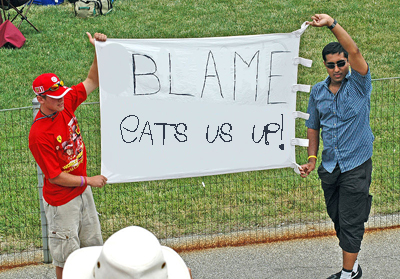 The reason it’s so important to forgive is because blame eats us up. We may think that if we mortally hurt the responsible person, we will be healed. This is one of our baser instincts that is worth looking at. It’s not legal to wound someone, so it’s not a solution. It’s not moral to wound someone. It’s not wise to stoop to the bad behaviors of others. This is where forgiveness comes in.
The reason it’s so important to forgive is because blame eats us up. We may think that if we mortally hurt the responsible person, we will be healed. This is one of our baser instincts that is worth looking at. It’s not legal to wound someone, so it’s not a solution. It’s not moral to wound someone. It’s not wise to stoop to the bad behaviors of others. This is where forgiveness comes in.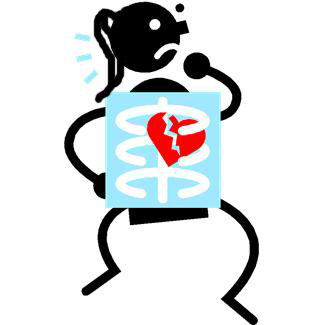 When people lash out and hurt us, they are insecure, self-absorbed, immature, impatient, fearful and hurt from a broken heart. They have become this way because someone has taken a part of their life, and they have not been able to forgive it. Do they always know it? No. In the odd cases where this is not the case, the individual is usually broken in some other way.
When people lash out and hurt us, they are insecure, self-absorbed, immature, impatient, fearful and hurt from a broken heart. They have become this way because someone has taken a part of their life, and they have not been able to forgive it. Do they always know it? No. In the odd cases where this is not the case, the individual is usually broken in some other way.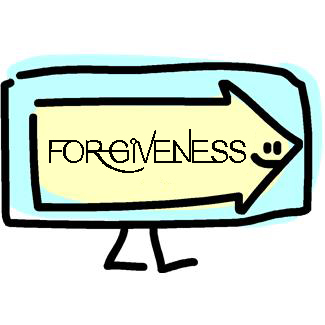 ere are some action steps that may lead us to begin the path of forgiveness. It is not impossible, no matter what it feels like. It’s like any other habit that requires a starting point and constant repetition. In the spirit of any holiday that may have to do with forgiveness, these action steps may be surprisingly useful.
ere are some action steps that may lead us to begin the path of forgiveness. It is not impossible, no matter what it feels like. It’s like any other habit that requires a starting point and constant repetition. In the spirit of any holiday that may have to do with forgiveness, these action steps may be surprisingly useful.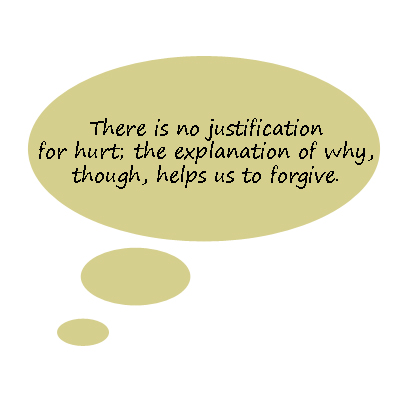
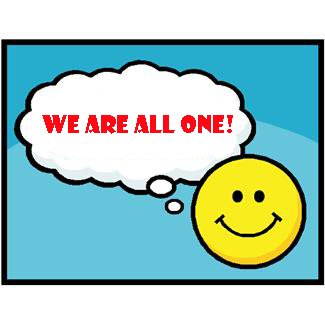

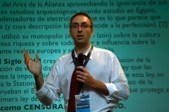 “Speak out,”
“Speak out,” What transpired for various reasons has been a culture of speakers with no solutions, many just “orating for ego” (good T-shirt). Since there has not been a focus solving vs. complaining in modern times, it is more common to hear groups of complainers than groups of problem solvers. Plus, it’s more difficult to create than to condemn (another good T-shirt, “create, don’t condemn”).
What transpired for various reasons has been a culture of speakers with no solutions, many just “orating for ego” (good T-shirt). Since there has not been a focus solving vs. complaining in modern times, it is more common to hear groups of complainers than groups of problem solvers. Plus, it’s more difficult to create than to condemn (another good T-shirt, “create, don’t condemn”).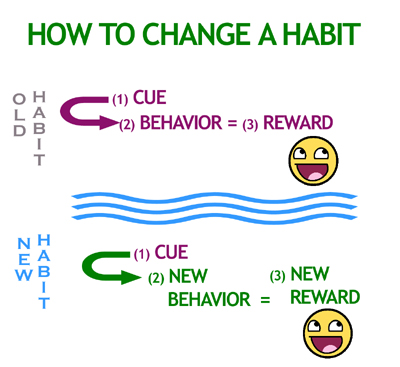 In order to solve vs. complain, we follow the process for any habit change: cue, replace the old action, reward.
In order to solve vs. complain, we follow the process for any habit change: cue, replace the old action, reward.

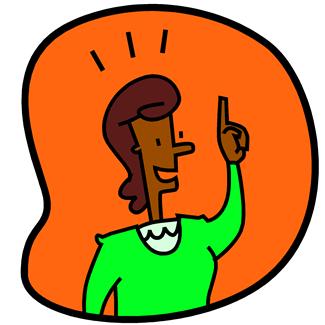 Now that we are evolved enough to understand this, it is time to consider the solution process with every speech. We may have to change our habit, if we are used to being critical, not constructive. We can certainly slap the wrist of education for lack of emphasis on oration without solution. And we can change how we educate from now on.
Now that we are evolved enough to understand this, it is time to consider the solution process with every speech. We may have to change our habit, if we are used to being critical, not constructive. We can certainly slap the wrist of education for lack of emphasis on oration without solution. And we can change how we educate from now on.
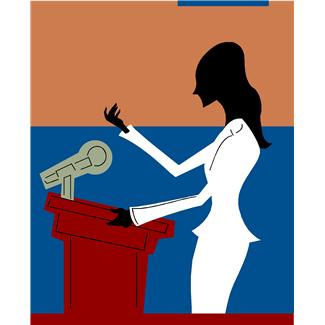
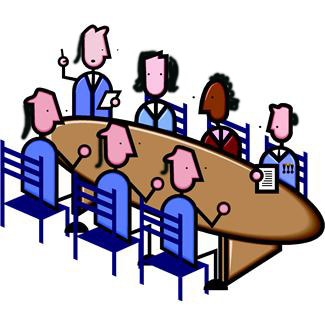
 “Drugs are tested by the people who manufacture them, in poorly designed trials, on hopelessly small numbers of weird, unrepresentative patients, and analyzed using techniques which are flawed by design, in such a way that they exaggerate the benefits of treatments.”
“Drugs are tested by the people who manufacture them, in poorly designed trials, on hopelessly small numbers of weird, unrepresentative patients, and analyzed using techniques which are flawed by design, in such a way that they exaggerate the benefits of treatments.” What Henry I. Miller says in his Forbes article, taken from his experience as an FDA medical officer, is that many drug studies that are not published are not negative but inconclusive. What I say is there should be some sort of very accessible bank to everyone, patients, friends of patients and medical personnel, alike, with all study results, so that those who are evaluating a drug, whether taking it or prescribing it, can make the most informed decision based upon all previous experience that anyone has had with it, regardless of why its results may not have been published.
What Henry I. Miller says in his Forbes article, taken from his experience as an FDA medical officer, is that many drug studies that are not published are not negative but inconclusive. What I say is there should be some sort of very accessible bank to everyone, patients, friends of patients and medical personnel, alike, with all study results, so that those who are evaluating a drug, whether taking it or prescribing it, can make the most informed decision based upon all previous experience that anyone has had with it, regardless of why its results may not have been published. make as informed decision as possible about any drug or treatment with the transparency factor in place.
make as informed decision as possible about any drug or treatment with the transparency factor in place.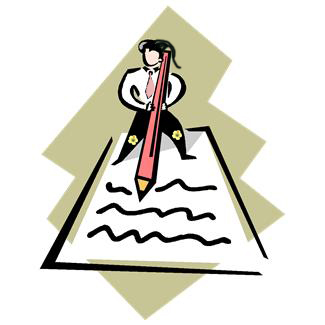 This reminds me of the waiver to a clinical trial I considered. One of the questions they asked is,
This reminds me of the waiver to a clinical trial I considered. One of the questions they asked is,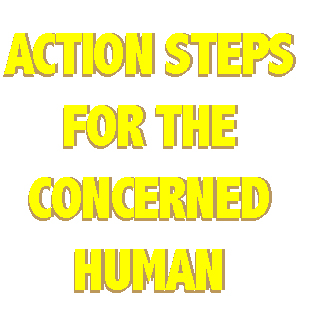 1)
1) In 2007, the FDA Amendment Act required all trials of any drug or device must be registered. Also, for a drug to be approved, its results must be posted to clinicaltrials.gov within a year of the end of the trial.
In 2007, the FDA Amendment Act required all trials of any drug or device must be registered. Also, for a drug to be approved, its results must be posted to clinicaltrials.gov within a year of the end of the trial.





